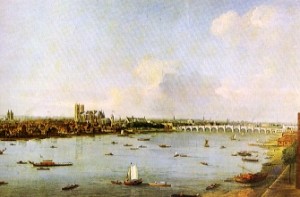Britain in the Eighteenth Century witnessed a period of unprecedented prosperity. This was chiefly the result of a comparatively stable democratic Government and a flourishing international trade with a growing number of colonies supported by trusted financial institutions.
Consequently, many industrious and successful merchants, traders, craftsmen and professionals (the new ‘middle’ class) found they had the time and money to visit opera houses, music clubs or, in London, one of the pleasure-gardens such as Vauxhall or Ranelagh to hear the latest concertos and songs. Thus England become the vibrant musical centre of Europe to which, not surprisingly, a great wave of continental musicians emigrated to seek fame and fortune. Amongst these of course was the great George Frideric Handel.
But although Handel dominated the opera house and the world of the oratorio, it fell to others to provide the majority of the music in the theatre, the church and chamber music in the home.
Many of these composers, although very popular in their lifetimes, have for 250 years been generally ignored. In all probability the main reason for this was that their music simply went out of fashion, with most baroque music concerts in the 19th and early 20th centuries consisting of oratorios i.e. music predominately by Handel and Bach.
A revival of 18th Century English music in the 1930s and 1940s, led by the likes of Gerald Finzi (1901-1956) and Constant Lambert (1905-1951), went a long way to rekindle interest in this forgotten era – but still, today, many of these composers’ works remain relatively unknown.
More information
[subpages depth=1]


I was wondering what the popular music was for the 18th century did a search and your site came up So thanks for this.
like
Hey there – just a quick question; in early/mid 18th Century England was it common or known for people (merchants / traders) to have fortepiano’s in their homes and for ‘laymen’ to know how to play? Or would they only listen to live music by visiting the opera?
What music did they commonly listen / dance to in their homes?
Thanks for your advice
Jacquie
In early/mid eighteenth century England there would have been a harpsichord or the smaller but similar virginal or spinet in many homes (pianos appeared later in that century). Amateur music making became increasingly popular with the harpsichord, singing, flute and violin amongst the most popular choices. They would have visited opera houses and pleasure gardens etc. to hear music and would have purchased simpler arrangements of the popular tunes to play at home. Trio sonatas by Corelli and William Boyce were also particularly popular.
I’ve just discovered your site, having heard an organ piece by John Stanley in church this morning and then looking him up on Google, which included your site in its list of possibilities. I read and enjoyed your article on Stanley and now have been just looking around on the site. It’s super! Many thanks.
Many thanks for your kind comments. Glad you enjoyed the John Stanley article. He strikes me as having been a remarkable man who left behind some really remarkable music. Thanks again for taking the trouble to comment.
Herschel is another -a great composer and astronomer
Thanks for doing this wonderful website, it’s a great resource and very fascinating.
I’m currently writing a novel set in Bristol in 1766 and one of the characters is a musician. I wondered if you could help me with some information – what would have been the likely make up of the orchestra in the Theatre Royal in Bristol for performances of plays?
Also, what kind of musical ensembles played in the inns and coffee houses of the period?
Thank you in advance.
Many thanks for your comments.
A typical orchestra size is outlined on my site on the William Boyce symphonies page. I am not aware that the size or make-up of a theatre orchestra is documented anywhere, but, in order to control costs, one would imagine that the minimum of players would be employed.
Rooms at inns were a common meeting ground for concerts to be performed. I have not seen direct evidence of meetings at coffee houses; maybe the easy availability of alcohol was one of the attractions of the concerts! Glee and catch clubs also met at rooms at inns. In the Blackwell History of Music in Britain I have found specific reference to a catch club founded in Bath (I am thinking not far from Bristol), where a harmonic society founded by Sir John Danvers in 1784 met weekly in winter and spring and ‘soon became the best thing of the kind in England’ (Memoir of Henry Harrington M.D. 1830 page 227. This can be viewed in Google Books).
I find this a very useful site for quick reference. But may I ask who you are?
Thank you for the compliment. I am just an enthusiastic amateur.